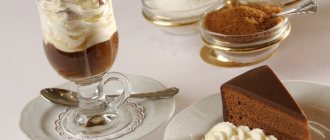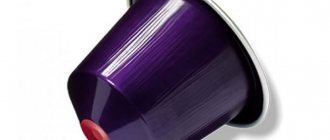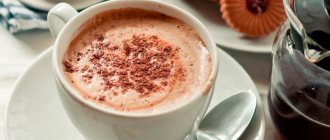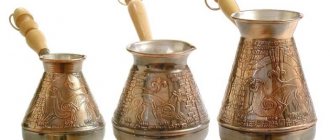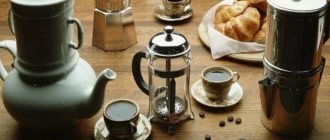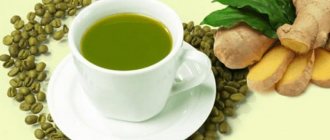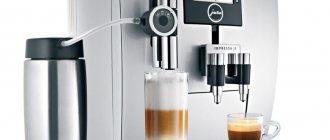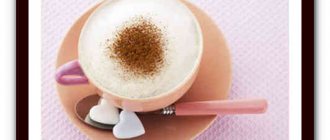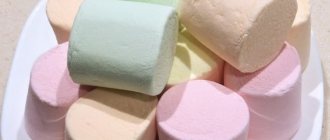Listing all the types and names of coffee is not an easy task: many drinks are prepared from coffee beans, and many peoples have their own traditional recipes.
Some brewing methods have been known for a long time in Eastern and African countries. A significant part of the recipes owes its origin to Italy, the trendsetter of coffee fashion.
Coffee-based drinks differ in additional ingredients, their proportions and mixing methods. In some, strong and aromatic espresso plays the leading role, in others, which are milder in taste, milk predominates. Coffee fans know the difference between a latte and a cappuccino and espresso, and a doppio from a lungo. And novice gourmets need to get acquainted with the basic cooking options so as not to get confused when studying the menu in a coffee shop.
Espresso based
Coffee lovers supplement classic espresso with sugar, milk or cream, lemon, alcohol and ice cream, and simply change the ratio of coffee and water. The result is more than a dozen recipes.
Espresso
Espresso is figuratively called coffee juice. A small (30 g) portion of an exceptionally aromatic drink with a rich taste does not need any additions. It is prepared from finely ground coffee in coffee machines or carob coffee makers under pressure, therefore it has a characteristic dense foam (creama). For serving, special “demitasse” cups are used - small but thick-walled.
Doppio
Double espresso for those who want to invigorate themselves. Drink volume – 60 ml. Like regular, served without sugar and dessert.
Ristretto
A serving is literally enough for one sip (up to 20 ml). Taste buds will be pleasantly surprised by the strength of the taste of this concentrated drink. Moreover, the amount of caffeine per 100 ml is lower here due to the shorter preparation time.
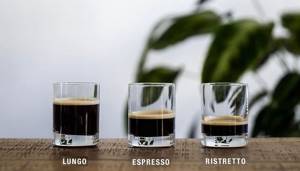
Lungo
The opposite of ristretto. The cooking time has been increased and therefore the serving size is 50 ml. A strong and bitter option for the first half of the day.
Lungo, whose volume is close to doppio, differs from it in its higher caffeine content, bitter taste and less pronounced aroma.
Americano
The difference between espresso and Americano is the serving size and concentration of coffee. This is 200-400 ml of espresso diluted with boiling water. The taste of the drink is unsaturated, so it is often supplemented with sugar and milk. Served with dessert. Italians disdain this type of coffee, considering it tasteless.
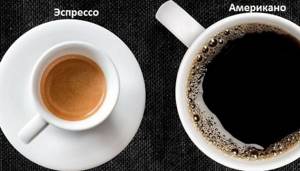
Basic rules for serving coffee in coffee shops
Proper serving of coffee in any establishment is the key to a successful business. The taste of the drink is important to clients, but a beautiful and correct presentation is a sign of respect for the guest.
Generally accepted rules:
- The coffee is not ground in advance: the grinding, while it sits, will absorb extraneous odors and the drink will not be as aromatic.
- The hot mixture is served in a preheated cup. The temperature of the liquid poured into a cold cup drops, which has a negative effect on the taste. Espresso is always served in a heated cup - the same standard.
- Americano and Cappuccino are prepared only before serving to the visitor. A few minutes after preparation, the drink loses its unique aroma, and an oxide film appears on its surface.
- A glass of clean water is served with invigorating coffee. Drinking water before drinking a hot drink helps refresh your taste buds.
- Refined sugar is served with the drink or several packets of sugar are left next to the cup.
- To sweeten the coffee, there should be a compliment on the saucer - cookies, meringue or candy.
If the cafe has a lot of visitors, some rules are simplified or not followed so carefully. How different types of coffee are served
Coffee shop staff must prepare coffee according to all rules and serve it in a timely manner so that it does not get cold. The classic hot drink is not poured into a bowl, but is prepared in a serving container. It is served at a temperature of 65-70 °C.

If you are making espresso, serve it with a cup of clean water. Serving without sweeteners is allowed, although sucrose enhances the energizing effect of caffeine. New or specialty drinks are made easier to serve.
Espresso and ristretto
The serving methods for espresso and ristretto are the same. The drink is poured into a heated cup, then the waiter brings it to the client. The spoon should be on the left side. The cup is on the saucer. On the right side of the plate there should be a compliment from the establishment. Sugar should be on the right side of the saucer or on the table - not far from the cup.
Professional coffee shops always offer a glass of water with ristretto and espresso. The capacity of the cup with the drink should be 30-40 ml. When serving, turn the handle of the cup to the left for the convenience of the guest. The drink should be around 75-85 °C.
Be sure to read: Coffee with condensed milk is a delicious drink for those with a sweet tooth
Americano
Espresso diluted with hot water is called Americano. Depending on the method of mixing the components, the foam takes on a certain appearance and shape. In the cup, the finished drink should reach 75-85 °C. It is served in a Latte glass with a straw. You should give 1-2 packets of sugar or a whole sugar bowl.
In small coffee shops, Americano is prepared in paper cups. Serving in a tall cup with a long spoon is allowed. Chocolate, cheese, fruit are suitable as snacks.
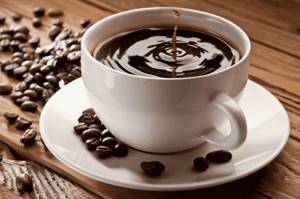
Cappuccino and Latte
An Irish glass is used to serve Cappuccino to the client. It is placed on a saucer. Be sure to bring out the sugar bowl and napkins. For Latte, use a larger cup, for Cappuccino, a smaller one. The visitor is offered a long spoon or straw. In restaurants, the waiter brings a spoon and straw.
The Irish glass is comfortable to hold in your hand. The handle must be turned to the right to make the client comfortable. Coffee of Italian origin is heated to a temperature of 60 °C. The classic portion does not exceed 180 ml. Some Starbucks offer Latte and Cappuccino in a 500-600 ml glass.
Cold drinks – Affogato, Frappe and Glace
Frappe and Glace are united by the temperature when serving and a portion of espresso or Americano inside. Frappe is served as a soft drink or a complete treat. The mixture is poured into a tall glass glass. The drink is decorated with whipped cream. A spoon is placed next to the glass.
Glace is served in the same way as Frappe. The glass does not have handles, so it does not matter how the waiter places it on the table.
Any medium or large restaurant offers visitors aromatic Affogato. It is served in a wide glass glass with a handle. Her waiter turns to the right for the convenience of the visitor. Coffee dessert is convenient to consume with a long spoon.
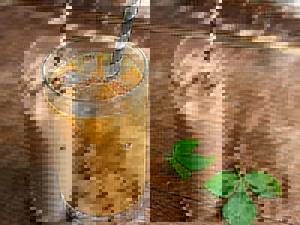
Cappuccino cups are often used for serving, but ice cream bowls are a more profitable option. The coffee base should have a temperature of 70-80 °C. A scoop of ice cream is added to it.
Alcohol and coffee – serving Irish coffee, coffee with cognac, Coretto
The Irish drink Irish is served in a special Irish glass. Its capacity is 240 ml. Baristas sometimes choose other clear glasses with handles. Irish should be served with a cinnamon stick. Since the container is shaped like a glass, it is worth bringing it to the client on a saucer. A long spoon will allow you to mix all the ingredients.
Irish's delivery is simple. A spoon is needed to mix layers of foam, coffee and alcohol. There is no point in snacking on Irish coffee, as it acts as a full-fledged warming drink.
Be sure to read: Why is salt added to coffee and what benefits does it have?
Preparing coffee with cognac does not take much time. The waiter brings out the drink in a standard cup. The cocktail is decorated with whipped cream: they are laid out in the form of a hat. Sometimes the treat is served in glass mugs.
The tradition of serving Coretto comes from Spain and Italy. Brandy and grappa are often added to the drink. The visitor must first select the type of alcohol included in the cocktail. A common method of serving: a cup of espresso is given and a glass of alcohol is taken out separately. The client independently decides how to mix the components and in what proportion. It is appropriate to offer a packet of sugar with this cocktail.
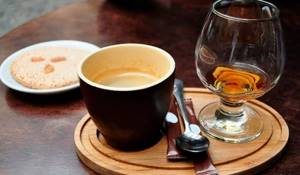
Coffee and milk drinks
Varieties of coffee in which the main ingredient is milk or cream are also very common. They contain less caffeine, but more calories, have a delicate creamy taste and often act as independent desserts. Sugar and various syrups are added to all types of coffee milkshakes at will: warm milk in their composition adds a slight sweetness.
Cappuccino
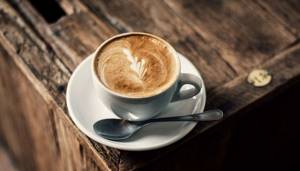
The most popular type of coffee-cream cocktail. Milk foam covers the espresso, and there is 2 times more milk than coffee. It is possible to add vanilla for flavor. Dense foam allows you to create drawings using the latte art technique.
Latte
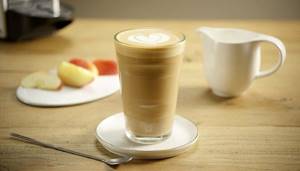
The differences between coffee latte and cappuccino are in the proportions: here milk predominates. Therefore, the caffeine content is low and this type of coffee cocktail is suitable for the evening. Often complemented with sweet flavored syrups.
- This is interesting: What is the difference between a latte and a cappuccino?
Latte macchiato
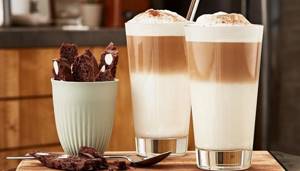
A three-layer drink made from coffee, milk and creamy foam is usually served in tall glasses and drunk through a straw. More calories than a regular latte.
Raf coffee
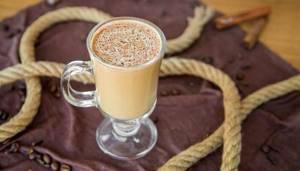
A sweet and nutritious dessert coffee made with espresso, cream and vanilla sugar. All ingredients are whisked together. Honey raf is also prepared.
Breve
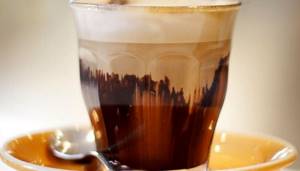
This type of coffee drink is characterized by a small volume - 60 ml. The composition is reminiscent of a macchiato, but this warm coffee-milk-cream cocktail is not flaky. Breve is not whipped, but simply mixed. Good for evening coffee drinks.
Flat white
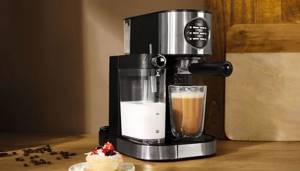
The name translated means “flat white”. This is coffee (60 ml) with the addition of hot milk (120 ml) without whipping. It differs from cappuccino in the absence of foam. Popular in Australia.
- Read more: Flat white coffee – recipe, difference from cappuccino
Mocha (mochaccino)
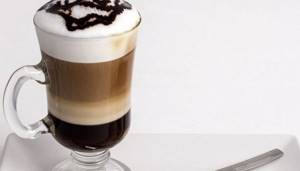
A chocolate-milk-coffee four-layer cocktail for those with a sweet tooth, served in tall glasses decorated with foam and chocolate chips. A complete nutritious dessert containing 260 kcal per 100 g.
